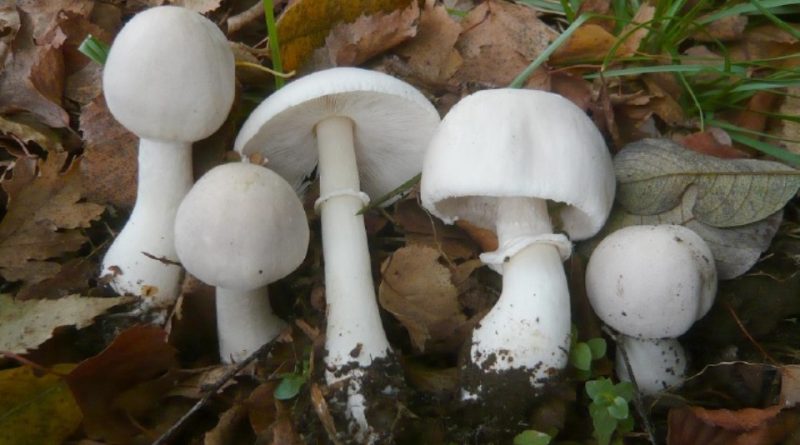Leucoagaricus carneifolius
Leucoagaricus carneifolius
The smooth drum mace (Leucoagaricus carneifolius (Gillet) Wasser, 1977) is a basidiomidete mushroom belonging to the family of the Agaricaceae.
Systematic –
From the systematic point of view it belongs to the Eukaryota Domain, Kingdom Fungi, Basidiomycota Division, Basidiomycetes Class, Order Agaricales, Family Agaricaceae and then to the Genus Leucoagaricus and to the L. Meatifolius species. Among the main obsolete binomials we mention: Agaricus leucothites Vittad., Lepiota naucine var. leucothites (Vittad.) and Lepiota leucothites (Vittad.).
Etymology –
The term Leucoagaricus comes from the Greek λευκός leucós white and from the genus of mushrooms Agaricus, also this term from the Greek αγαρικόν agarikón agaric, fungus of the Agars, because according to the Greek physician, pharmacist and botanist Dioscorides was imported from Agaria, the country of the Sarmatians. The specific epithet Carneifolius comes from cárneus of meat and fólium leaf, lamella: from the leaves (or from the lamella in the case of mushrooms) flesh-colored.
Geographic Distribution and Habitat –
Leucoagaricus carneifolius is a fungus that grows and bears fruit on cultivated land, vegetable gardens and meadows in the period from summer to autumn. It is a fungus common in North America and in Europe but not common.
Recognition –
This mushroom is recognizable by its 4-10 cm diameter hat, with a fleshy consistency, a hemispherical shape, finely covered with small brownish scales on a whitish background. The lamellae are quite thick, rounded to the stem, rosy-flesh-colored. The stem is cylindrical, thickened at the base with white-brown coloration. The meat is white, which tends to yellow after rubbing, with almost no odor and nutty taste. Under the microscope, white spores of mass are noticed.
Cultivation –
Leucoagaricus carneifolius is not a fungus that appears to be cultivated.
Uses and Traditions –
The smooth drum is a mushroom that, especially for the less experienced, can be confused with the deadly white amanitas, so we recommend to pay close attention or, better still, not to collect it. It can also be confused with field mushrooms when the hat has not yet opened, but the smooth drum of the drum has the pinkish lamellae that turn brownish-black when ripe. It is a fungus of good edibility that was considered a time of quiet consumption. In recent times, some allergic reactions and mild gastrointestinal intoxications have been recorded. Moreover, since it is easily confused with poisonous amanitas, consumption is not recommended.
Preparation Mode –
The drum of smooth drum can be consumed, especially the hat like other mushrooms, including the mushrooms or of similar consistency, but the use is not recommended for the aspects listed above.
Guido Bissanti
Sources
– Wikipedia, the free encyclopedia.- Cetto B., 2008. The mushrooms from life, Saturnia, Trento.- Pignatti S., 1982. Flora of Italy, Edagricole, Bologna.- Conti F., Abbate G., Alessandrini A., Blasi C. (edited by), 2005. An annotated checklist of the Italian vascular flora, Palombi Editore.
Warning: Pharmaceutical applications and alimurgical uses are indicated for informational purposes only and do not in any way represent a medical prescription; there is therefore no liability for their use for curative, aesthetic or food purposes.

